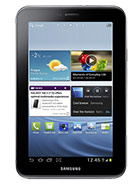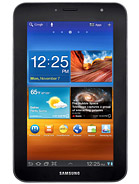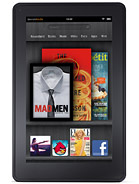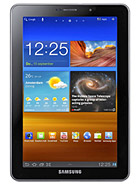Google Nexus 7 review: Catching Fire
Catching Fire
Final words
So that's that then - it's time we summed our experience with the Nexus 7. The short version is that Google and Asus have done a great job. If this is what Android slates looked like from the start, they wouldn't still be playing catch up with the iPad.
The Google Nexus 7 is extremely fast, has all the major features covered and is priced incredibly attractively to make you easily forgive the few corners cut. Google could afford the luxury of selling the tablet at manufacturing cost and rely on other sources of revenue (apps and content) and it's great that they made it count.
The Tegra 3-powered Google tablet offers performance incomparable to anything in its class, a sharp (if slightly washed out) screen and great build quality (aside from a few units with faulty screens). The stock Google experience might not be as feature-rich as some custom skins, but changing the launcher on Android is a dead simple task.
We can't help but commend the Android team for their work on 4.1 Jelly Bean. Learning from their mistakes, the Google devs have focused on filling a few gaps, which were left back at the time when Android was rushing to lead the functionality race. Now, the best-equipped tablet platform is also as smooth as its iOS competitor.
The only area where we found Jelly Bean - actually, Android as a whole - to be lacking is that tablet-optimized apps are a minority. While the iPad sold in huge numbers and drew in developers who created apps specifically for it, Android tablets like the Nexus 7 still primarily rely on phone apps. They work, but they don't really make the best of the extra screen real estate and resolution.
That's about to change, however, because the Nexus 7 will almost certainly sell big (the tablet has been having a hard time keeping with the demand ever since its launch) and that will motivate developers to optimize their titles. And secondly, all recent smartphone top dogs have nearly identical resolution (the Galaxy Note even matches the Nexus 7), so it will be easier to do those optimizations.
But as usual there's a catch. The blessing of the lower price is slightly tainted as it led to a couple of long term disadvantages. We are mostly talking the missing microSD card slot and the limited choice of built-in storage - 8GB or 16GB. This is undoubtedly Google's way of encouraging you to use its cloud storage and consume multimedia from the Play Store, rather than side-load it. The MHL functionality has also been left out and so has the DivX and XviD support, making it harder to share said multimedia content, unless you also happen to own the Nexus Q.
A proper rear facing camera is something we never missed - tablets are just plain awkward to take pictures with. The screen isn't the most competitive, but you can't realistically expect an AMOLED or a Retina LCD at this price point.
The Nvidia T30L chipset is the least powerful of all quad-core otions available (the three Tegra T3 variants, which only differ in clock speed, and the Exynos 4 Quad), but then again it's still enough to make the Nexus 7 one of the most powerful tablets around. Even more so when you consider the kind of competition it's up against.
The first device that comes close to matching the Nexus 7's bang-for-buck is the Samsung Galaxy Tab 2 7.0. The compact Samsung slate isn't much more expensive than the Nexus 7 and throws in a microSD card slot and a camera at the back. The codec support is better there too.
Sadly, the Tab 2 7.0 makes do with a dual-core CPU and a lower-res screen, and we find those to be quite major points in Nexus 7 favor. Not to mention that Jelly Bean is where the journey will probably end for the Tab 2, while the Google purebred is guaranteed to be better treated.

Samsung Galaxy Tab 2 7.0 P3100
The case with the Galaxy Tab 7.0 Plus is quite similar, except you get a dual-core Exynos chipset, instead of a TI OMAP one and a bit more internal storage - 16GB.

Samsung P6210 Galaxy Tab 7.0 Plus
A more natural competitor for the Google Nexus 7 is the Kindle Fire. The Amazon slate costs the same as its rival, but you'd need quite some fiddling (and giving up on your warranty) to make it run stock Android. And even then you'll get what's at best last-year's hardware. The Kindle Fire basically comes out as an even more limited Nexus 7, with less power, which costs the same - surely the release of the Google slate looks like the end of the road for Amazon's first gen tablet.
The other - and perhaps more apt - competitor is the Barnes&Noble Nook Tablet. It too runs a customized Android, but can be coerced into running something closer to stock Android (e.g. CyanogenMod). For $180 you can get the 8GB version, while the 16GB is $200, and both have a microSD slot. Note that the 8GB version has only 512MB of RAM, while the 16GB one packs 1GB. The chipset is otherwise the same - TI OMAP 4 with a dual-core CPU clocked at 1GHz, like you get in the Kindle Fire. And just like the Fire, there's no Bluetooth connectivity.
A tablet that you'd do well to consider is the Samsung Galaxy Tab 7.7. And not because it can match the Nexus 7's pricing or processing power - it doesn't even come close. It's just that it has a couple of unique features that are hard to put a price on. We are, of course, talking about the gorgeous 7.7 AMOLED screen and the super slim waistline. But even the biggest fans of those ultra-deep blacks will be hard pressed to justify spending twice as much on a tablet that's half as powerful and is reaching the end of its life cycle.
We won't be suggesting any 10" slates - they are a completely different ball game. Seven-inchers are mostly about portability, halfway between a compact smartphone and an ultrabook. The big slates in turn slot in between a phoneblet and powerful but probably heavy laptops.
And as far as the first category goes, the Nexus 7 is the one to beat. The Google tablet is not ideal, but it makes the right compromises and if the limited storage isn't a deal-breaker, we can't see anyone choosing another 7" Android tablet right now.
Reader comments
- AnonD-482651
- 23 Dec 2016
- CWd
After using this device less than a year with all taking care of it no scratch, no hardware defect, sending positive reviews here in GSMarena, sending positive updates on its firmware. I AM NOW TAKING THEM BACK X( . You can only enjoy this device bec...
- Julie
- 09 Oct 2016
- mHv
How do you get the camera to work.
- sweetnelacs
- 09 Dec 2015
- t7X
Problem in charging almost 12 hour before full charge..how can i fix it?

